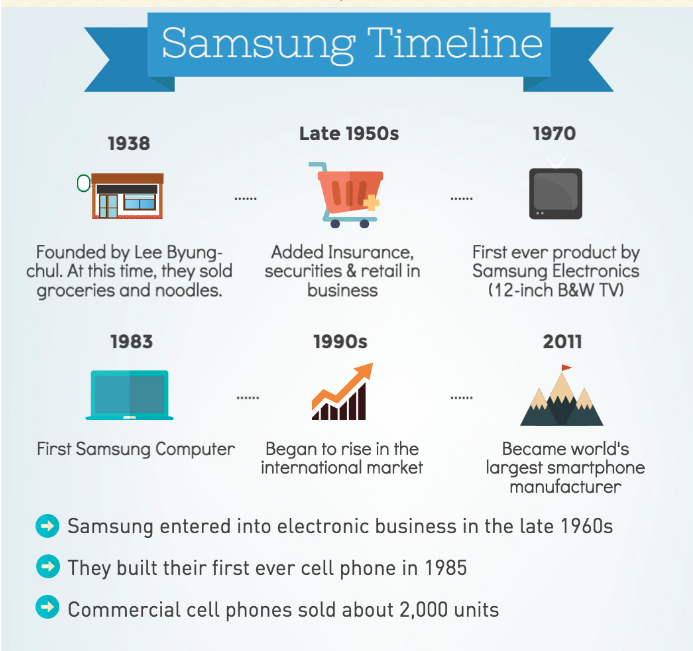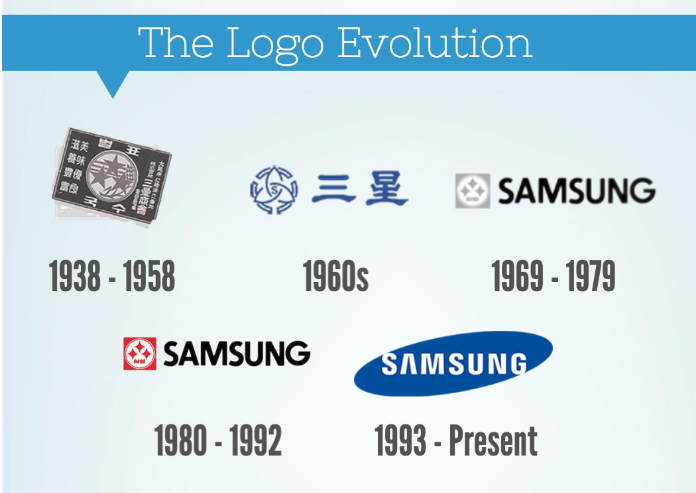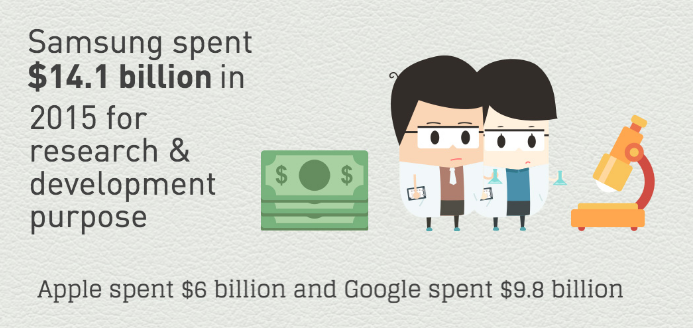
Samsung, a South Korean company that is one of the world’s largest producers of electronic devices. Samsung specializes in the production of a wide variety of consumer and industry electronics, including appliances, digital media devices, semiconductors, memory chips, and integrated systems. It has become one of the most recognizable names in technology and produces about a fifth of South Korea’s total exports.
Samsung was founded as a grocery trading store on March 1, 1938, by Lee Byung-Chull. He started his business in Taegu, Korea, trading noodles and other goods produced in and around the city and exporting them to China and its provinces. (The company name, Samsung, came from the Korean for “three stars.”) After the Korean War, Lee expanded his business into textiles and opened the largest woolen mill in Korea. He focused heavily on industrialization with the goal of helping his country redevelop itself after the war. During that period his business benefited from the new protectionist policies adopted by the Korean government, whose aim was to help large domestic conglomerates (chaebol) by shielding them from the competition and providing them easy financing. In the late 1950s, the company acquired three of Korea’s largest commercial banks as well as an insurance company and firms that made cement and fertilizer. Samsung in the 1960s acquired more insurance companies as well as an oil refinery, a nylon company, and a department store.
During the 1970s the company expanded its textile-manufacturing processes to cover the full line of production—from raw materials all the way to the end product—to better compete in the textile industry. New subsidiaries such as Samsung Heavy Industries, Samsung Shipbuilding, and Samsung Precision Company (Samsung Techwin) were established. Also, during the same period, the company started to invest in the heavy, chemical, and petrochemical industries, providing the company a promising growth path.
Electronics
Samsung first entered the electronics industry in 1969 with several electronics-focused divisions. Their first products were black-and-white televisions. During the 1970s the company began to export home electronics products overseas. At that time Samsung was already a major manufacturer in Korea, and it had acquired a 50 percent stake in Korea Semiconductor.
The late 1970s and early ’80s witnessed the rapid expansion of Samsung’s technology businesses. Separate semiconductor and electronics branches were established, and in 1978 an aerospace division was created. Samsung Data Systems (now Samsung SDS) was established in 1985 to serve businesses’ growing need for systems development. That helped Samsung quickly become a leader in information technology services. Samsung also created two research and development institutes that broadened the company’s technology line into electronics, semiconductors, high-polymer chemicals, genetic engineering tools, telecommunications, aerospace, and nanotechnology.
Samsung as a global company
Lee Byung-Chull died in 1987 and was succeeded by his son Lee Kun-Hee. Samsung was split into five companies; electronics remained under Lee Kun-Hee’s leadership, and the other four companies were run by other sons and daughters of Lee Byung-Chull. Lee Kun-Hee felt that Samsung had become complacent because of its dominant position in the South Korean economy and was unprepared for global competition. He famously said to Samsung executives, “Change everything but your wife and kids.” Under what Lee termed a “new management” concept, Samsung insisted that subordinates point out errors to their bosses. It also stressed the quality of products over quantity, promoted women to the ranks of senior executives, and discouraged bureaucratic practices.
Driven by Lee Kun-Hee’s shakeup of Samsung’s culture, in the 1990s the company continued its expansion into the global electronics markets. Despite its success, those years also brought about corporate scandals that afflicted the company, including multiple patent-infringement suits and bribery cases. (In one such case, Lee Kun-Hee was found guilty in 1996 of bribing former president Roh Tae-Woo. He was sentenced to two years in prison, a sentence that the judge commuted, and was pardoned in 1997.) Nevertheless, the company continued to make advancements on the technology and product-quality fronts, with a number of its technology products—ranging from semiconductors to computer-monitor and LCD screens—climbing into top-five positions in global market share.
The 2000s witnessed the birth of Samsung’s Galaxy smartphone series, which quickly not only became the company’s most-praised products but also were among the best-selling smartphones in the world. Samsung also supplied the microprocessors for Apple’s earliest iPhone models and was one of the largest microprocessor manufacturers in the world in the late 20th and early 21st centuries. Since 2006 the company has been the top-selling global manufacturer of televisions. Beginning in 2010, the Galaxy series expanded to tablet computers with the introduction of the Galaxy Tab and in 2013 to smartwatches with the introduction of the Galaxy Gear. Samsung introduced a foldable smartphone, the Galaxy Fold, in 2019.
In April 2008 Lee was indicted on charges of breach of trust and tax evasion as a part of a scheme, and shortly thereafter he resigned as chairman of Samsung. In July he was convicted of tax evasion, and he was subsequently fined approximately $80 million and sentenced to three years suspended jail time. Lee was pardoned by the South Korean government in December 2009 so that he could remain on the International Olympic Committee and lead South Korea’s successful bid for the 2018 Winter Olympics at P’yŏngch’ang.
In March 2010 Samsung Group executives made Lee Kun-Hee the head of Samsung Electronics, the conglomerate’s largest division. Later that year he returned as chairman of the Samsung Group. However, in 2014 he suffered a heart attack that left him incapacitated until his death in 2020. Although Lee retained his posts, his son, Lee Jae-Yong (Jay Y. Lee), became the de facto leader of the Samsung Group.
Lee Jae-Yong was sentenced to prison in 2017 for bribing former president Park Geun-Hye. He served one year and was released in 2018 when his sentence was suspended. That suspension was overturned, and he was again imprisoned, from January to August 2021, when he was paroled. During Lee’s time in prison, Samsung was led by two, and later three, co-chief executive officers. Lee was also indicted in 2020 for financial crimes stemming from the 2015 merger of two Samsung subsidiaries. The government alleged that the values of the two subsidiaries had been manipulated to cement Lee’s overall control of Samsung after he assumed leadership.
Samsung History Facts by: Peter Bondarenko from Britannica.com













